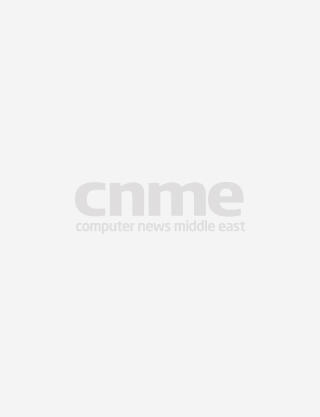There are few organisations like the Qatar Foundation.
Formed in 1995, the Doha-based Foundation is dedicated to building human capital in a part of the world where the need and potential for human development are considerable. The diverse structure of the organisation demands an information technology infrastructure and team that is constantly dynamic and always productive.
“We cover several, differing areas and our diversity brings in a lot of complexity. There is education, research, development, etc., and therefore the infrastructure has to be made of different components to facilitate the needs of the various entities. And these have to be integrated to each other to provide for stakeholder needs,” says Sa’di M Awienat, director of IT at Qatar Foundation.
Considering the complexity and diversity of the organisation, the IT team is constantly looking for ways to standardise and consolidate from the top right down to the end-user perspective. This drives their need to look for capable, reliable vendors, with whom they can form long-term partnerships. And this is where Microsoft has stepped in to play a crucial role.
“Microsoft is positioned to be one of our key drivers for software as well as infrastructure components. There is Microsoft at the front-end with the desktop OS, Office and the collaboration tool – all of which are adopted and used by the end-user here. On the infrastructure side, we have three key components – Exchange and the messaging tool, Internet Security and Acceleration Server (ISA) and the Team Foundation Server (TFS). We have standardised our solutions with Microsoft as the base,” says Awienat.
Apart from the other Microsoft components used by the Foundation, Awienat says that in 2006 it successfully rolled out, and has been using since then, SharePoint as the platform for development and collaboration.
“Our experience with SharePoint started way back in 2005, when we started piloting the 2003 version. This pilot was limited to the IT department. The big implementation started with the 2007 version, and we began rolling that out during the last months of 2006 and early 2007. Since then we have been adding more components to the solution. It is currently a huge implementation, covering a lot of key sites, and many important areas within the Foundation have been enabled. SharePoint is being used as the tool for archiving, as the document management system, as a net solution for ensuring that there is consistent publishing of information, as well as a tool for collaboration and the creation of forums across the organisation,” says Awienat.
Currently, the Foundation is in the process of piloting and examining Windows 7 and laying out the roadmap for this. According to Awienat, they are doing an assessment for compatibility and the team will be working on it going forward in 2010.
“We have had a long-term relationship with Microsoft and the investments have given us great ROI. They have provided us with great support. They have also provided great examples in extending support to educational and non-profit institutions in the region. I would say that we have achieved significant ROI for what we have invested in Microsoft over the years,” states Awienat.
Effective software
Apart from Microsoft, over the years the Foundation has built up its portfolio of software solutions and continues to add to it regularly.
“Our core is based on Oracle’s ERP suite covering the various modules of HR, Finance, Purchasing, Inventory and Services. This has been in place since 2003. Over the years it has matured and more value-added services have been enabled. We have therefore moved from a traditional ERP to an extended one where we have enabled functionality and automated communication to deal with suppliers, positions of RFPs and invoices as well,” says Awienat.
The Foundation is also involved in a continuous process to automate more of its organisational functions.
“From the moment we request something to be purchased, all the way to the invoicing process has been automated within our portfolio of apps. This is very unique and we are very proud of that. Our aim is to enable more internal self-service and raise the level of maturity within the organisation. Our aims can be achieved by focusing and promoting more automation as a journey, not as a one-time job. You don’t do it just once – it is a continuous journey. There are always areas for improvement, and areas to move from manual operations to automated and system-based operations,” says Awienat.
The Foundation’s other core system is related to student management, which is key to its operations having, as it does, different schools and education entities being served under its umbrella.
“Our needs drove us to have software to track student requests, as well as student grading, tenders and various functionalities for schools, including library management systems. This is another big system. In addition to that we have implemented a budgeting and planning system to enable different stakeholders in different departments to actively engage in budgeting and preparing their business plans, submitting their KPIs, and doing proper reporting for the various bits of data that they have from previous years. We started our journey to have a corporate performance measurement system years ago (in some organisations they call this enterprise business intelligence.) Our executives have access to key dashboards to measure the performance of the various departments and the operations in different areas, and ensure that the organisation is moving towards achieving its goals and strategic objectives,” states Awienat.
Apart from the core systems, the Foundation also has a whole lot of supporting applications based on departments and business requirements. At the backend, the Foundation operates three data centres. While two of these are Tier II data centres, one of them is Tier III.
“The Tier III data centre has been built by our joint venture sister company that is focused on managed services. We will shed our primary data centre into this Tier III data centre. We expect to start services from here by mid 2010. Over time one data centre will be phased out and we will end up having just two data centres – primary and secondary,” says Awienat.
Servers at the data centre are Intel-based and are being standardised on blade technology. The Foundation consolidated its servers in early 2009 and started on its journey to virtualisation.
“We are moving our servers to virtual servers and we are currently using the VMWare platform. We started virtualisation in the first months of 2009 – and currently around 70% of our applications are running on virtual machines,” he says.
The Foundation also took steps to consolidate its storage in 2009 by moving from a model where storage resides in each server to a consolidated model based on SAN technology. This enabled it to provide scalability, improve storage performance, and take steps towards business continuity and disaster recovery measures.
Apart from this move to consolidate, the other major investment of the Foundation last year involved setting up the network for the various structures within the campus.
“From a networking perspective, one of the major things that we have done, which we are very proud of, is that we have worked out infrastructure to connect the various buildings within this huge city. The size of the Education City is around 14 million square metres, with various buildings. And this represents only 30% of the Foundation’s size in the coming five to ten years,” says Awienat.
“So one of the major things that we have done in collaboration with our partners, Cisco and Meeza, is that we have rolled out a network within the Education City to connect the various buildings, and ensure that we can provide best-in-class service and support to the different entities housed inside the City,” he adds.
He also counts measures taken to improve international connectivity as one of the major investments made in technology in 2009. The gigabyte connectivity, which extends all the way back to the USA, has been put in place to meet the collaboration needs of universities and other centres which exchange information and data with entities across national borders on a regular basis.
Outsource experts
The Foundation prides itself on the 50 strong IT team that it holds in house that handles operations, maintenance and personalisation. For most other functions, the Foundation relies on third-party service providers.
“Three years back we made a strategic decision to rely on outsourcing, given our growth and the time we had. Considering the dynamics of our organisation, it is very challenging to cope with the growth. Currently we have more than 28 centres or entities under the umbrella of the Foundation and it is still growing. On an annual basis we add nearly five centres. In order to cope with this growth better, we decided to bring in world-class third party service providers, who will also help raise knowledge levels and expertise as well as provide us with the ability to scale and agility for the future. We have outsourced many of our key areas of technology operations, including call centre management, operational maintenance, data centre management, monitoring and network operations,”says Awienat.
He adds, “We retained mainly business apps and the systems associated with them. We have done this because nobody can understand our business better than ourselves and we do not want to give control to anybody else, no matter how trusted or efficient they are.”
For the same reasons that the Foundation has taken to outsourcing – rate of growth and the time available to get solutions working – it has also chosen to go for ready-made applications when the need arises.
“This is a strategy where we do very little customisation. We rely on out-of-the-box implementations for best-in-class solutions and focus more on implementations, integration and personalisation of these apps. We don’t believe in re-inventing the wheel and starting developments from scratch. In some cases we do not have a solution that can fix things – especially with an organisation of our type and size – so the approach that we follow is to outsource the development and rely on partners to do the development on our behalf. I don’t have within the team any software developer,” says Awienat.
Pacing development
While much of the basic technology investments have been done at the Foundation, the IT team is constantly looking to the future in order to not only keep pace with the growth, but to predict it and provide solutions one step in advance.
“There will be a lot of developments in 2010. The key thing would be around Microsoft’s SharePoint. We are taking this forward and making it one of our main platforms for building apps and bringing in more automation – both workflow automation and process automation. The potential of Sharepoint is huge so we are looking forward to leverage further the great features that come along, especially the archiving and document management system, which we are already using, but we need to extend this further and cover our customers,” says Awienat.
The Foundation also plans to apply Microsoft technologies on the security front, and use the same to provide end-users with the ability to connect to Office and access their resources remotely without requiring additional physical elements for authentication.
“We are working closely with Microsoft in an envisioning exercise to lay our roadmap for the future. Microsoft is laying out the platform for their technologies. Apart from SharePoint we are going in for the new Exchange as well as the latest Active Directory. The reason we are going for these is not just because they are the latest. We have closely examined the features and the value that these new releases are offering and we see a great potential for our stakeholders to receive benefits from this. On the IT side, we see lots of room for optimising operations and management with the new Microsoft releases. With these solutions we are able to maintain our infrastructure in a better way, through desktop or exchange, and extend more features and functionalities to our end-users,” says Awienat.
Besides software investments, the Foundation is also looking to add and update its infrastructure in a continuous format.
“We will continue our journey of consolidation and virtualisation, and this is one of the main focus areas for this year. One of the things that we are working on is to move from a traditional enterprise network into more of a cloud-type of network where we have a private cloud. This is something we are working on closely with our partners Cisco. They will be helping to architect our network, and this is good for many reasons – one of them is to provide us a bit of agility to give the various entities of the Foundation the right secured connectivity and independence to run and manage their own operations. This is a step in the direction of supporting further managed services and moving more to the cloud. In two years from now, we will start moving to the cloud and have more managed services on top of that. Internally teams and structures will be in place to measure and encapsulate these services, so that it becomes easy to decide which services will be put on the cloud and which will be provided in a more traditional way. This is how we will be working going forward,” says Awienat.
The Foundation will leverage this cloud further by forming partnerships with other research and educational facilities in the UAE, KSA, Bahrain and Oman among others, and make it into a global network.
Goal!
The Qatar Foundation is formed of ambitious projects and its technology team is fuelled by the same drive as the founders, in trying to achieve higher and go beyond today’s expectations.
And none of this would be possible without the higher management’s support of the technology ventures.
“Our senior management understand IT as a strategic asset within the organisation. Without the continuing support of the senior management, without the proper funding that they have been giving us at IT, we would be unable to achieve what we have so far and what we have planned for the future,” says Awienat.
With its focus and the internal support, there is all reason to expect the Qatar Foundation’s success in the coming years.
Quick look at Qatar Foundation
The Qatar Foundation is dedicated to building human capital in a part of the world where the need and potential for human development are considerable.
Through its threefold mission of education, scientific research and community development, it is helping build a sustainable society where the sharing and creation of knowledge will enhance quality of life for all.
At the current stage of its history, Qatar is blessed with oil and gas reserves that have brought it relative wealth for the foreseeable future. But this situation will not prevail indefinitely. The only guarantee of lasting prosperity lies in the ability of people to learn, adapt and innovate.
The Qatar Foundation was established in 1995 by His Highness Sheikh Hamad Bin Khalifa Al Thani, Emir of Qatar, as a vehicle to convert the country’s current, but temporary, mineral wealth into durable human capital.
It is achieving this goal through a network of centres and partnerships that are dedicated to excellence in their respective specialisations and that are growing together into a powerful force for social change. Central to this mission is a determination to defend and develop Qatar’s unique heritage and culture.
The Qatar Foundation is chaired by Her Highness Sheikha Mozah Bint Nasser Al-Missned, wife of the Emir, who supports and guides this process.
It sets out to be an asset not just for Qatar but for the entire Middle East region and beyond, and it already touches communities and individuals well beyond the country’s borders.
The Foundation’s flagship project is Education City, a 1,000-hectare campus on the edge of Doha where most of its member institutions are located.











